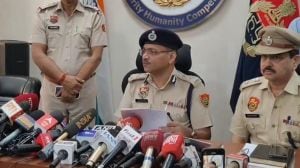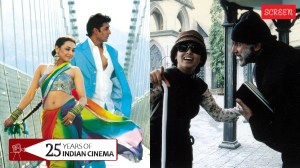TOUGH IT OUT
Should you see a doctor if you have a sport injury?
Should you see a doctor if you have a sport injury?
You have been playing a lot of tennis recently,and now you think you have tennis elbow. Or youre a swimmer with an aching shoulder. A cyclist with sore knees. A runner with pain in your heel. Do you go to a doctor,or tough it out?
I think most folks should not go,because most general doctors dont know a lot about running injuries. Most docs,often even the good sports docs,then will just tell you to stop running anyway,so the first thing is to stop running yourself, said Dr Paul D. Thompson,a marathon runner and a cardiologist at Hartford Hospital in Hartford.
Dr Volker Musahl,an orthopedist at the University of Pittsburgh Medical Center,who also competes in marathons and triathlons,had a similar response. If you want to continue to run,dont see a doctor, he said,adding that if you were one of his patients,coming in with a sports injury like a sore knee or hamstring or heel or hip,he would just tell you to rest.
But Dr Musahl added a caveat. When he recommends staying away from doctors,he is talking about staying away if you have the usual sort of aches and pains that plague almost everyone who exercises regularly. There are red flags that should prompt you to get medical attention,Dr Musahl said: pain that gets progressively worse,pain at rest or at night,joint swelling or bruises that do not heal,and knees or elbows or other joints that lock or seem unstable.
Dr Thomas Best,the president-elect of the American College of Sports Medicine and director of the division of sports medicine at Ohio State University,advises seeing a doctor if you are not recovering in your usual period of time from whatever injury or soreness you typically get. For example,he said,every weekend after his usual 10-mile run,his knees are sore. Lord knows whats going on in there, Dr Best said. But the pain goes away in a day or so,and he has grown used to it.
Know how you typically recover, he said. When you are not recovering as you typically do,thats the first warning that something more is going on.
The problem with rushing to see a doctor for common injuries,according to Dr Musahl and others,is that doctors have a limited arsenal. For a typical sports injury pain or tenderness in a muscle or tendon they cant make you recover faster. And some of the treatments doctors dispense,like cortisone shots for injured tendons,can actually slow recovery,albeit providing temporary pain relief.
There are some helpful treatments for run-of-the-mill injuries,but they often do not require a doctor,and doctors often know nothing about them.
Rigorous studies have shown that eccentric contractions,in which a muscle lengthens as it works,seem to speed the healing of tennis elbow and of injuries to the Achilles tendon,which attaches the calf muscles to the heel. They involve,for example,doing heel drops for an Achilles tendon injurystanding on a step and dropping your heel,then raising it to the level of the step again.
In one recent study testing an experimental treatment,which turned out not to work,heel drops were used as the standard of carethe presumed-to-be-effective alternative to the treatment being tested. Participants getting the experimental treatment,as well as those who did not get it,did 180 heel drops a day.
Sometimes going to a doctor for a diagnostic workup can be precarious,with scans that can show all sorts of apparent abnormalities and injuries that are not causing any problems.
For example,in a study reported at a recent meeting of the American Orthopedic Society,orthopedist Dr Matthew Silvis did MRIs of the hips of 21 professional hockey players and 21 college players. They showed abnormalities in 70 per cent of the athletes,even though these hockey players had no pain or only minimal discomfort that did not affect their playing. More than half had labral tears,rips in the cartilage that stabilises the hip.
MRIs are so sensitive, Dr Musahl said. They frequently show little tears or fraying everywhere. And it is very,very common to have a small labral tear in your hip it doesnt mean you have to have the particular symptoms.
The same is true for rotator-cuff tears,rips in the tendons that help stabilise the shoulder. Studies have found that about half of all middle-age people with no shoulder pain have these tears,although they are unaware of them and have no symptoms.
Dr Best,though,said that when an athlete has an injury that does not go away in the expected time,skilled doctors could help by finding the cause of the injury in the first place. Knee pain,for example,might actually be caused by a tight iliotibial band,which stabilises the knee,and weak gluteus muscles. He always watches athletes move to see if he can spot biomechanical problems. And,he said,doctors who do not watch athletes move may never understand the causes of their injuries.
You as a runner,coming into my office and lying down on a table thats a pretty nonfunctional exam, Dr Best said.
It is worth pointing out that doctors who advise you to avoid doctors do follow their own advice.
Dr Thompson went to an orthopedist about five years ago for knee pain that plagued him whenever he ran. He said he knew the doctor well because they mountain-biked together. He had an MRI that showed that his iliotibial band was inflamed. Dr Thompson stretched it,and the pain eventually went away.
The visit before that one was 25 years ago when Dr Thompson had plantar fascitis heel pain caused by an inflamed tendon at the bottom of the foot. He went to a podiatrist,who gave him expensive orthotics and cortisone injections,but they did not help.
Then a podiatrist for a basketball team told him to tape his foot,and the problem went away. While a review by the Orthopedic Section of the American Physical Therapy Association classified the evidence for taping as weak, Dr Thompson swears by it. The fact that experts think the taping evidence is weak means they are not seeing enough runners and is the best argument for not seeing them, he said. If I stop taping, he added,the problem comes back in a month.
As for Dr Musahl,he says he never sees a doctor for his sports injuries. When he feels pain,he cross-trains awhile until the pain goes away. And that is how most experienced athletes behave,Dr Musahl said. They know their injuries and know that the injuries will heal with or without a doctor visit.
Athletes who are older usually have had that problem before, he said. They are smart about it,they know it is self-limiting. Younger people come in immediately, Dr Musahl said.
Then,if they continue with their sport,they learn about the limits of medicine.
NYT



- 01
- 02
- 03
- 04
- 05




























